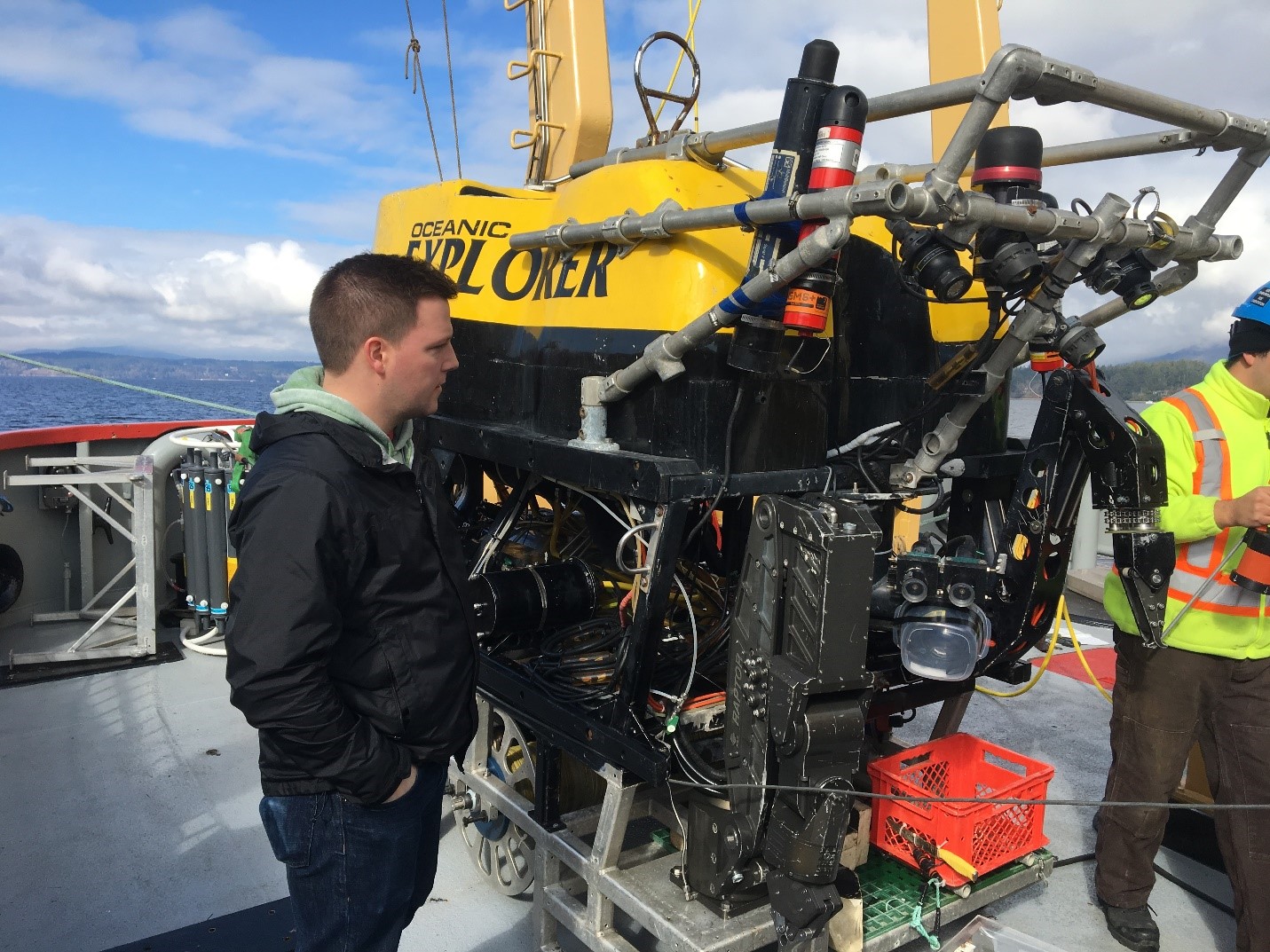Research that begins deep under the sea could help the Nuclear Waste Management Organization (NWMO) with the safe, long-term storage of Canada’s used nuclear fuel half a continent away.
It is all thanks to a partnership with Ocean Networks Canada, an oceanographic research and monitoring arm of the University of Victoria. The collaboration allowed specialists with the NWMO last October to sink copper coins surrounded by bentonite clay under the salty waters of Saanich Inlet, off the B.C. coast. The underwater experiment creates a pressurized environment that allows researchers to better understand how these two elements of the engineered-barrier system will behave under pressure and over time.
For six months, the clay-coated coins sat 90 metres below the water’s surface in what is hoped to be the first of many underwater trials for the NWMO’s engineered-barrier system. The multiple-barrier system will eventually be part of a deep geological repository the NWMO hopes to build in Ontario, thousands of kilometres away from the ocean.
“It is like an accelerated exposure test,” said Dr. Jeff Binns, a corrosion scientist with the NWMO who is helping to lead the research, as to why the underwater trials are useful. He added the salty, microbiologically active and low-oxygen environment at “the bottom of the ocean is like an accelerated deep geological repository.”
Even though the deep geological repository will be nowhere near an ocean, seeing how these two elements of the NWMO’s engineered-barrier system – copper and bentonite clay – stand up to harsh oceanic conditions provides insight into how they will behave at depth in the repository. The coins, after spending months under the heavy ocean waters, have now been sent to research partners at the University of Waterloo and the University of Western Ontario. They will be tested to see how well bentonite clay protected the copper from any microbial activity and other possible corrosive effects.
“The project also highlights our commitment to collaborating with experts in different fields,” Dr. Binns added. “Ultimately, we would like to learn how elements of the engineered-barrier system work together under pressure.
“Eventually, elements of the engineered-barrier system may be sunk as deep as 2.6 kilometres below the surface, further out in the Pacific Ocean. And our experts hope they may even test an entire scaled version of the container, without any used fuel, at those watery depths.”
The used fuel container developed by the NWMO is part of an engineered-barrier system that will help ensure a deep geological repository will protect people and the environment for generations to come. It is part of a multiple-barrier system designed to safely contain and isolate Canada’s used nuclear fuel deep underground well into the future.

